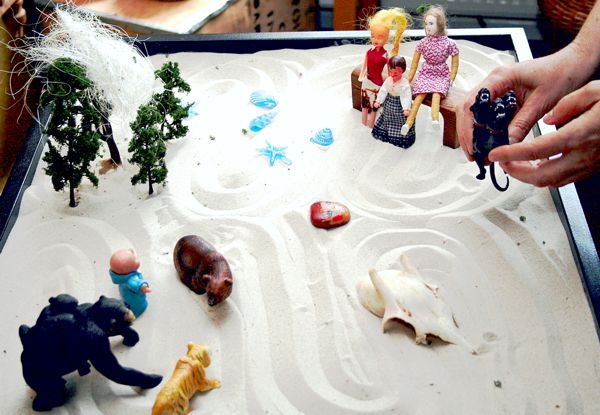
Sand Tray Therapy (AKA Sand Play Therapy) is not “just for kids” and not “just playing in the sand.”
Sand Tray engages different senses and helps integrate experiences and emotions of which one is not aware or for which one has no words.
When we talk, the frontal cortex is in control and acts as our “blocking filter.” As we try to verbalize our feelings, we intellectually defend and explain ourselves, and we use these protection techniques unintentionally. Of course, we need the frontal cortex in everyday life to navigate the world, but its blocking action may hinder progress in therapy.
It often happens in psychotherapy that our frontal cortex gets in the way and prevents us from “digging deep.” Sand Play Therapy helps us deal internally with emotions by accessing them through a “back door” that avoids the tug-of-war between what we think and what we feel.
goodtherapy.org explains Sand Play Therapy for adults:
“Although sand tray therapy may look like child’s play, it is a highly therapeutic and multidimensional form of therapy that can provide emotional release and realization for a person in therapy. Adults who have been traumatized and show limited response to other forms of therapy may respond well to sand tray therapy. The environment presents an atmosphere free from threats, and the therapist works with the person in therapy to alter the positions of the miniature objects as representations of the true people and events. By beginning to facilitate change on a fictitious level, a person can gain the courage and ability to recognize that these same changes can be made in his or her own life. While the sand play process involves creating a series of trays and might last for months or years, significant change may be experienced in just one sand tray session.”
CLICK HERE to learn about trauma.

